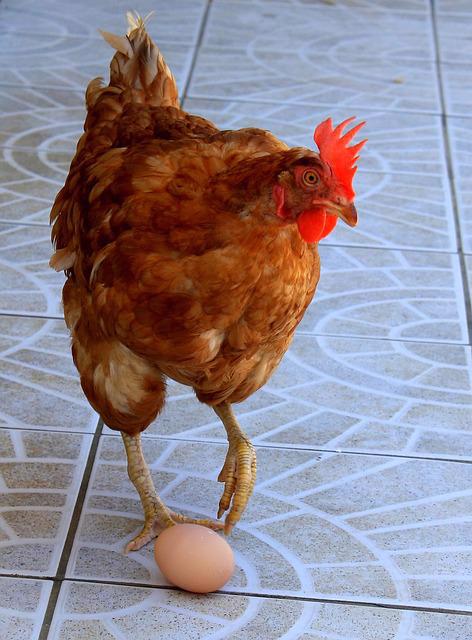New Research May Finally Solve the “Chicken or Egg First” Paradox

New Research May Finally Solve the “Chicken or Egg First” Paradox
It is often said that the first question a human ever asked was, “Hi, I’m Adam … what’s your name?” Many believe the second-oldest question is, “Which came first … the chicken or the egg?” While the debate on the answer to the first will probably never end, the answer to the second may have been determined by a new study (really!) which resolved the poultry paradox with science.

“Little is known about the early history of the chicken (Gallus gallus domesticus), including the timing and circumstances of its introduction into new cultural environments. To evaluate its Spatio-temporal spread across Eurasia and north-west Africa, the author’s radiocarbon-dated 23 chicken bones from presumed early contexts.”
The study, published in the journals Antiquity and The Proceedings of the National Academy of Sciences (PNAS) and led by Professor Joris Peters from the Ludwig Maximilian University of Munich, set out to prove or disprove the commonly held idea that wild chickens were domesticated in either China, India or southeast Asia 10,000 years ago, and were brought to Europe more than 7000 years ago.
These dates were easily accepted because domesticated chickens are everywhere and seemingly everyone in every culture eats their meat and their eggs – making them the world’s most domesticated animal. That made it easy for the geographically dispersed research team to collect chicken remains from more than 600 sites in 89 countries – not just bones but also records of burial locations and historical data.
Carbon dating of the bones fried the previous chicken domestication estimates.
“Of the 23 dated chicken bones, only five were consistent with their reported stratigraphic phasing. The radiocarbon dates associated with the remaining 18 were more recent than their reported dates.”
Not only were they “more recent,” they were much more recent – bones from Greece thought to date to 1250–1100 BCE were determined to be “post-1954.” That put the researchers on alert and they used modern chicken bone comparisons to change the date on other alleged Bronze Age fossils.
Upon completion of the carbon dating, the first confirmed evidence for a close relationship between humans and chickens came from complete skeletons placed alongside Bronze Age human burials in Dasikongcun, China (1320–1046 BCE), and Ban Non-Wat, Thailand (800 BCE).
You don’t need a calculator to do the math – that’s nearly 7,000 years after the previously accepted date of 10,000 years ago for the first domesticated chickens in China.
What about Europe and Africa?
“Radiocarbon dating also helped establish the age of 23 of the earliest-known chickens in western Europe and northwest Africa. The results show that domesticated chickens arrived in Europe only about 2800 years ago and took another 1000 years to reach the colder climates in the continent’s north.”
The study found chickens in Italy by the eighth century BCE and on the Balearic Islands off eastern Spain between the eighth to sixth century BCE – it’s believed they arrived via early Greek, Etruscan and Phoenician maritime trade routes across the Mediterranean.
Moving inland, a skeleton from the Czech Republic and data from Bulgaria show their arrival in the sixth to fifth centuries BCE, with the same time period for France and southern Britain. It looks like chickens didn’t appreciate cold weather — it took almost 1000 years longer for their arrival in Scotland, Ireland, Scandinavia and Iceland around 800 CE.
It appears chickens arrived on the Horn of Africa (the Somali Peninsula in east Africa) between the ninth and sixth centuries BCE and spread very slowly – not arriving in the northwest until the first century BCE and possibly as late as the medieval period around 500 CE.

“The expansion of the Roman Empire helped to popularise chickens and eggs as foodstuffs.”
While their domestication in China and Southeast Asia is directly attributable to rice farming and the availability of dried rice for feed, the study credits the Romans for spreading the world’s favourite breakfast dish and dinner meat. Which brings us back to the question: which came first – the chicken or the egg? If we’re talking food, the egg wins – the study shows that chickens were used for ceremonial purposes before being eaten, while humans saw how easily animals ate eggs and followed suit by consuming the eggs of wild chickens, ducks, geese, ostriches, quails and many other larger birds.
What answer did Adam get? That’s for another study to solve.